- Dominant years with the Browns: Nick Chubb‘s remarkable seven-year tenure with the Cleveland Browns saw him consistently rank among the league's elite rushers, boasting a career 93.9 rushing grade, third-best among all running backs.
- Transitioning to the Houston Texans: For the 2025 season, Nick Chubb joins the Texans, facing competition in the backfield and uncertainty following his 2023 injuries, though still with the potential to reclaim a prominent role.
- Subscribe to PFF+: Get access to player grades, PFF Premium Stats, fantasy football rankings, all of the PFF fantasy draft research tools and more!
Estimated Reading Time: 5 minutes

PFF’s Fantasy Football Player Profile series delivers the most in-depth fantasy football analysis available for the 2025 season.
Using PFF’s exclusive data, we evaluate player performance, competition for touches and how teammates and coaching staffs
Last updated: 7:15 a.m. Tuesday, June 17
Player performance
Nick Chubb spent the first seven years of his career as the Cleveland Browns‘ lead running back. His 93.9 rushing grade over those seasons was third-best among all running backs, just behind Derrick Henry and Josh Jacobs. His 3.9 rushing yards after contact per attempt are the most among running backs with at least 250 carries.
Chubb was eased into playing time as a rookie with Carlos Hyde as the starter to begin the season, but he earned the starting job by mid-year. From 2019 to 2022, Chubb finished as a top-12 fantasy running back in PPR each season while making the Pro Bowl despite splitting the backfield with Kareem Hunt for three of those seasons. Chubb constantly performed better in standard leagues due to a lack of receiving production, finishing in the top eight each season. However, he failed to finish in the top four in either format in any season, largely due to the split backfield.
Chubb suffered a torn ACL, MCL and meniscus in Week 2 of the 2023 season. He didn’t return until Week 7 of the 2024 season, but even then, he wasn’t nearly as explosive or effective as a runner. After five games, the Browns eased up on his workload. He averaged less than 3.0 yards per carry over his first six games but improved in his last two, finishing with 4.4 and 4.6 yards per carry. A foot injury ended his season three weeks early.
Generally, it takes running backs at least a season to get back to the player they once were, although sometimes players never return. Chubb’s injury was worse than most knee injuries by running backs, so it’s fair to question if he ever returns to the same player. Chubb has said that the injury is all behind him and that he’s feeling as good as he has in a long time.
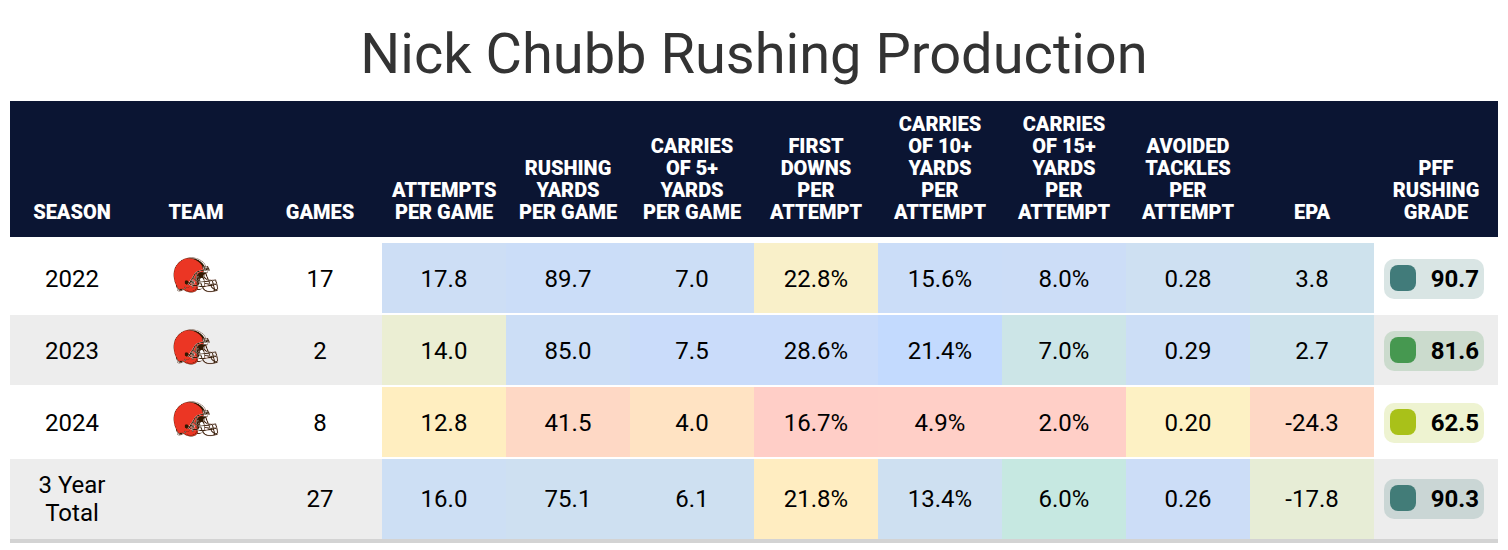
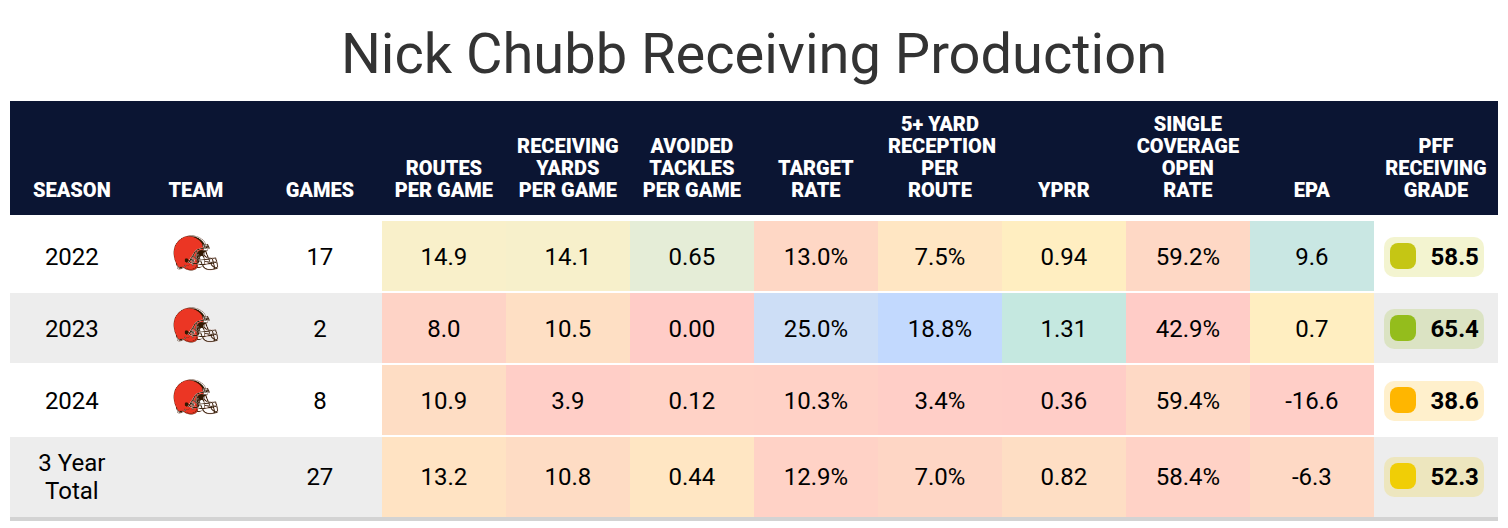
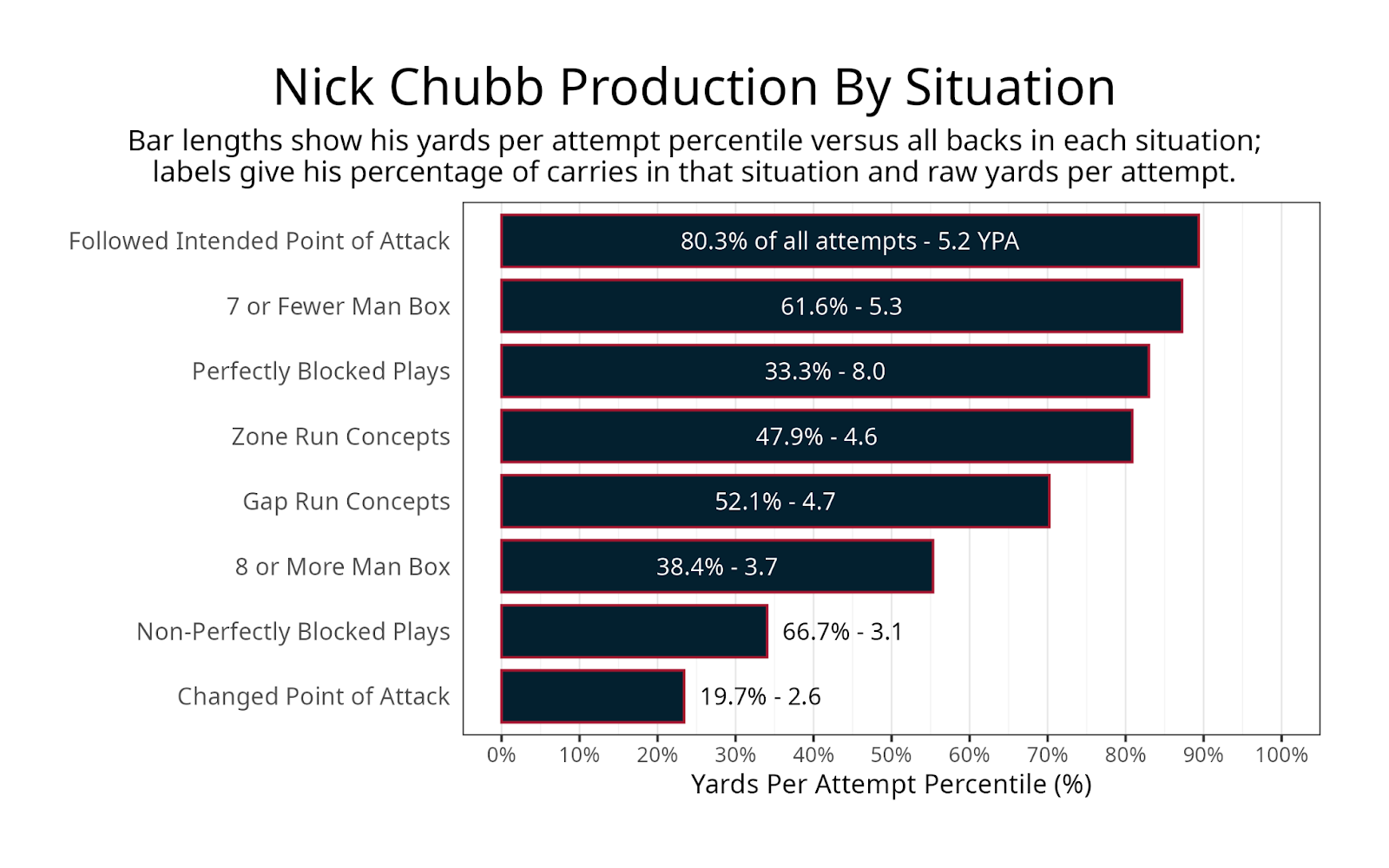
Projected role
Chubb has typically been used frequently on early downs and on the goal line but less frequently on third down and the two-minute drill. Chubb was a free agent this offseason, and the Browns opted to draft two new running backs rather than re-sign Chubb. After the draft, he found his new home with the Houston Texans.
His primary competition will be Joe Mixon, who, for several seasons, played for Chubb twice a season with the Cincinnati Bengals. The two have played near-identical roles in their careers as early-down backs. Mixon has the second-most career rushing attempts by a running back currently on a roster at 1,816, while Chubb is ninth at 1,340. Understandably, the Texans might want to cut back on Mixon’s playing time.
Chubb’s playing time will likely depend on how close he can get to his former self. Chubb, at his best, was better than Mixon, so there is at least a chance Chubb can win the starting job if he’s playing well enough. Chubb will need to beat out Dameon Pierce for the primary backup job, which seems likely given the team’s choice to sign Chubb. The Texans spent a fourth-round pick on Woody Marks, but he seems likely to be the passing-down back and, ideally, won’t be competition for Chubb and his snaps.
This leaves Chubb at an outside shot of being a starter but most likely being Mixon’s handcuff.
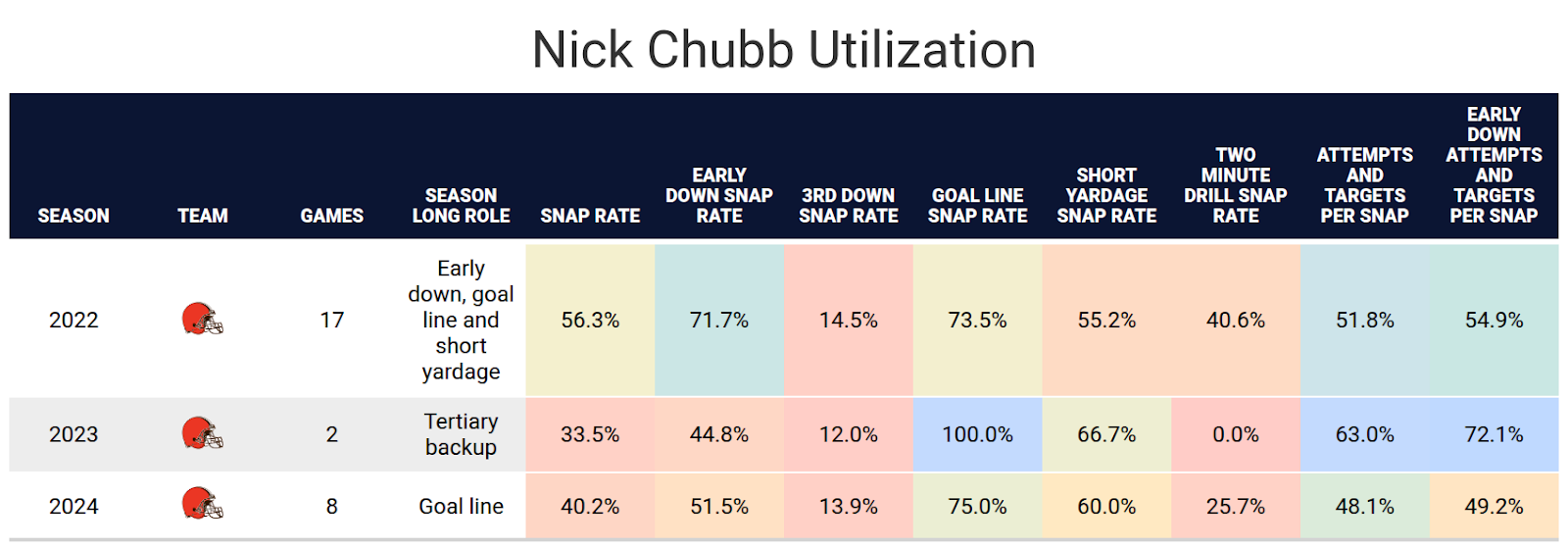
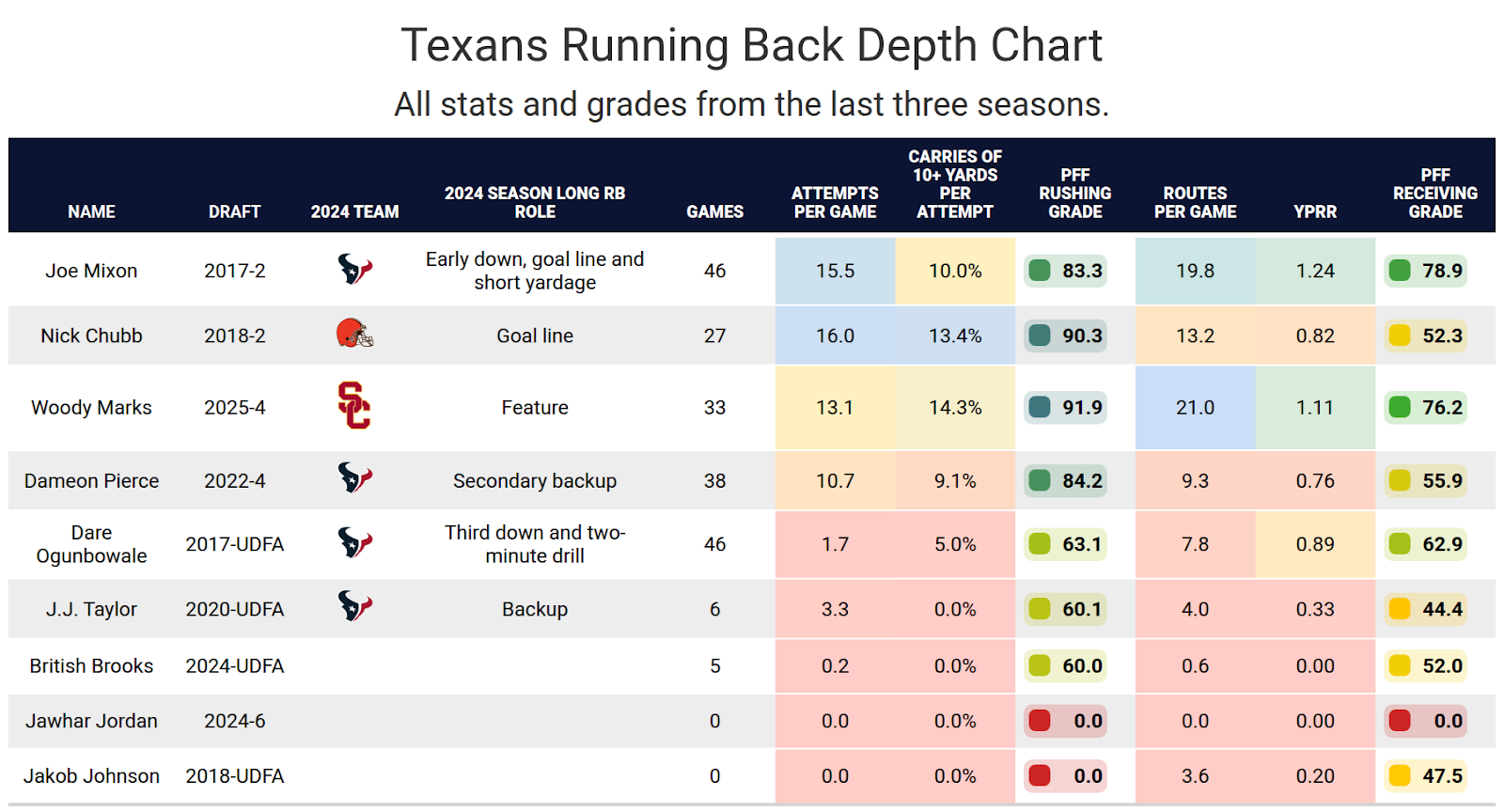
Impact of teammates
The Texans brought in a new offensive coordinator in Nick Caley. This will be Caley’s first time leading an NFL offense, so the offense will be less predictable than most. The offenses Caley was a part of in Los Angeles had one clear early-down back. However, early in Caley’s career, he had experience with the New England Patriots and three-man backfields. This means there is at least a chance we could see somewhere close to a 50-50 split with Mixon and Chubb, while Marks plays on third downs, which would be a nightmare for fantasy purposes. His offenses have been slightly run-heavy and average-to-good. This is largely in line with the Texans of last season.
The big question is how much more the team will pass this season relative to last season. Nico Collins missed five games, Stefon Diggs missed nine games, and Tank Dell missed three games last season. The team moved on from Diggs, and Dell is unlikely to play this year, but Houston traded for Christian Kirk and drafted Jayden Higgins in the second round and Jaylin Noel in the third. If Mixon's fantasy production decreases this season, it would most likely be from the team passing more often, leading to fewer rushing attempts.
While a lot of Chubb’s struggles last season were his recovery from injury, the offensive line was also part of the issue. During Chubb’s peak, the Browns had one of the best offensive lines in the league. However, Cleveland made minimal changes to the line, and the players have slowly but surely regressed with age. An offensive line is critical for Chubb, as he’s averaged 8.0 yards per carry on perfectly blocked runs and 3.1 on non-perfectly blocked runs.
The Texans' former left tackle, Laremy Tunsil, was known throughout his career for being an excellent pass protector. Still, he was also the only Texans offensive lineman to earn a run-blocking grade above 64.0 last season. The team replaced Tunsil with Cam Robinson, who has graded 60.0 or worse in run blocking each of the previous six seasons. The other four projected starters all played a significant role last season, but the team also brought in other older veterans and spent a second-round pick on Aireontae Ersery. There should be a lot of competition for those starting jobs, which will ideally lead to a better version of the line, even without Tunsil. Still, this should be among the league’s worst lines in terms of run blocking, which isn’t great when Chubb is given an opportunity.
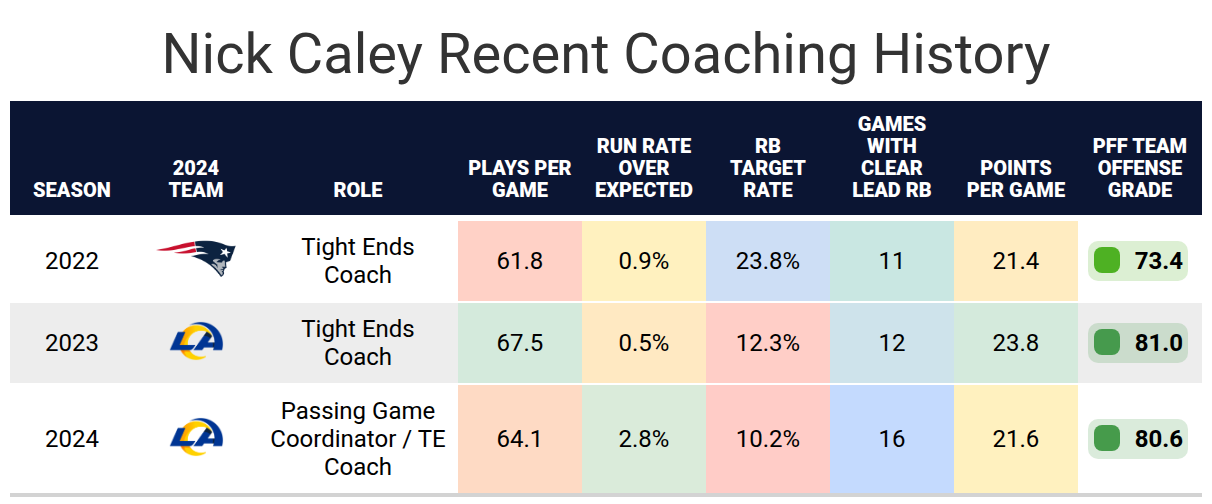
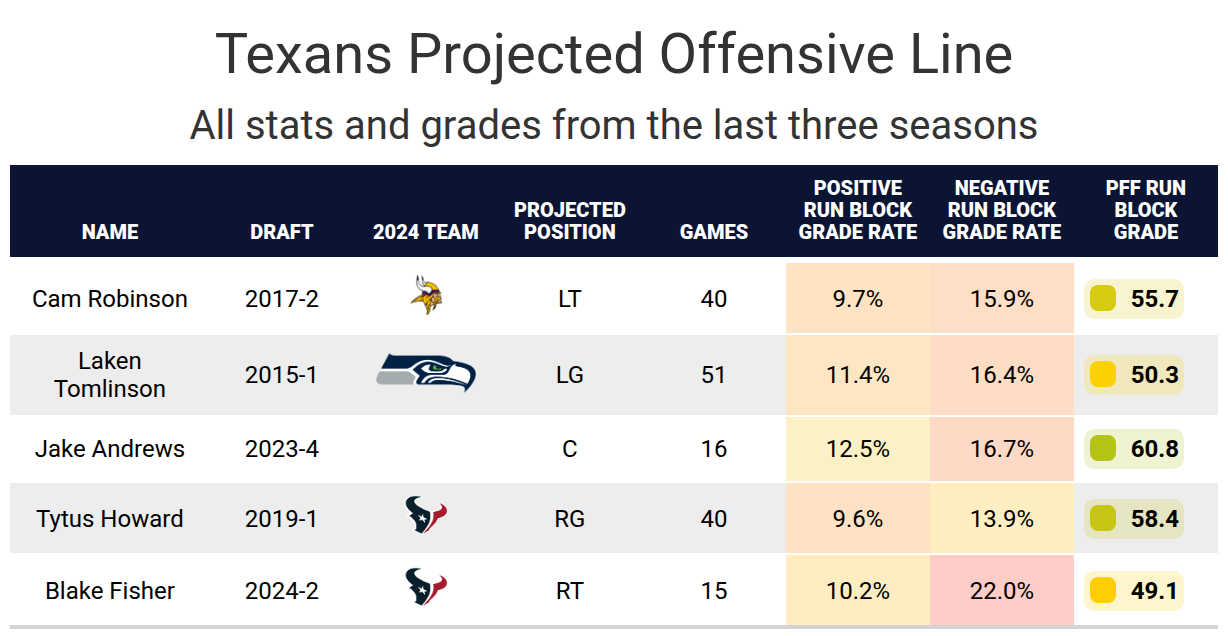
Bottom line
Nick Chubb has gone from a must-start fantasy starter to a handcuff. His chances of playing significant snaps are higher than the typical handcuff, given his odds of playing very well in contrast to where Joe Mixon is in his career. However, his ceiling is also lower than other handcuffs due to his lack of receiving production and the Texans' struggling offensive line.

Footnotes
- Statistics in tables and charts were chosen based on their ability to predict future fantasy performance on a per-game or per-opportunity basis or to describe the player relative to others at the same position.
- “Opportunities” are defined as passing dropbacks, rushing attempts and routes run as a receiver.
- Numbers are provided either by season or based on the past three years. For rookies, only college statistics are included. For non-rookies, only NFL statistics are considered, regardless of whether they played in college within the previous three years.
- As college competition is easier than NFL competition, most rookies are likely to see a decline from their historical numbers.
- Only FBS data is considered for college players and comparisons.
- Kneel-downs are removed from rushing data to provide cleaner quarterback rushing rate statistics.
- The table colors in this article range from blue (indicating good/high) to red (indicating bad/low).
- All percentiles and color codings compare the given player to others with a high sample of opportunities. Generally, the cutoff is one-third of the possible opportunities in the sample. If a player does not meet the threshold, they are still included in the comparison, though their results may appear better or worse than expected due to the smaller, less predictive sample size.
- Information on utilization classifications and their importance can be found here for running backs, wide receivers and tight ends.



 © 2025 PFF - all rights reserved.
© 2025 PFF - all rights reserved.